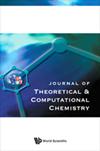Quantitative Structure-Activity Relationship Study of a Benzimidazole-Derived Series Inhibiting Mycobacterium tuberculosis H37Rv
IF 2.4
Q3 Computer Science
引用次数: 1
Abstract
This work was carried out on a series of twenty-two (22) benzimidazole derivatives with inhibitory activities against Mycobacterium tuberculosis H37Rv by applying the Quantitative Structure-Activity Relationship (QSAR) method. The molecules were optimized at the level DFT/B3LYP/6−31 + G (d, p), to obtain the molecular descriptors. We used three statistical learning tools namely, the linear multiple regression (LMR) method, the nonlinear regression (NLMR) and the artificial neural network (ANN) method. These methods allowed us to obtain three (3) quantitative models from the quantum descriptors that are, chemical potential (μ), polarizability (α), bond length l (C = N), and lipophilicity. These models showed good statistical performance. Among these, the ANN has a significantly better predictive ability R 2 = 0.9995; RMSE = 0.0149; F = 31879.0548. The external validation tests verify all the criteria of Tropsha et al. and Roy et al. Also, the internal validation tests show that the model has a very satisfactory internal predictive character and can be considered as robust. Moreover, the applicability range of this model determined from the levers shows that a prediction of the pMIC of the new benzimidazole derivatives is acceptable when its lever value is lower than 1.苯并咪唑衍生系列抑制结核分枝杆菌H37Rv的定量构效关系研究
采用定量构效关系(Quantitative Structure-Activity Relationship, QSAR)方法对22个具有抑制结核分枝杆菌H37Rv活性的苯并咪唑衍生物进行了研究。在DFT/B3LYP/6−31 + G (d, p)水平对分子进行优化,得到分子描述符。我们使用了三种统计学习工具,即线性多元回归(LMR)方法、非线性回归(NLMR)方法和人工神经网络(ANN)方法。这些方法使我们能够从化学势(μ)、极化率(α)、键长l (C = N)和亲脂性这三个量子描述符中获得3个定量模型。这些模型具有良好的统计性能。其中,人工神经网络的预测能力显著优于人工神经网络(r2 = 0.9995);Rmse = 0.0149;F = 31879.0548。外部验证试验验证了Tropsha et al.和Roy et al.的所有标准。内部验证试验表明,该模型具有良好的内部预测特性,具有较强的鲁棒性。此外,该模型由杠杆确定的适用范围表明,当杠杆值小于1时,可以对新苯并咪唑衍生物的pMIC进行预测。
本文章由计算机程序翻译,如有差异,请以英文原文为准。
求助全文
约1分钟内获得全文
求助全文
来源期刊
CiteScore
1.70
自引率
0.00%
发文量
0
审稿时长
3 months
期刊介绍:
The Journal of Theoretical and Computational Chemistry (JTCC) is an international interdisciplinary journal aimed at providing comprehensive coverage on the latest developments and applications of research in the ever-expanding field of theoretical and computational chemistry.
JTCC publishes regular articles and reviews on new methodology, software, web server and database developments. The applications of existing theoretical and computational methods which produce significant new insights into important problems are also welcomed. Papers reporting joint computational and experimental investigations are encouraged. The journal will not consider manuscripts reporting straightforward calculations of the properties of molecules with existing software packages without addressing a significant scientific problem.
Areas covered by the journal include molecular dynamics, computer-aided molecular design, modeling effects of mutation on stability and dynamics of macromolecules, quantum mechanics, statistical mechanics and other related topics.

 求助内容:
求助内容: 应助结果提醒方式:
应助结果提醒方式:


